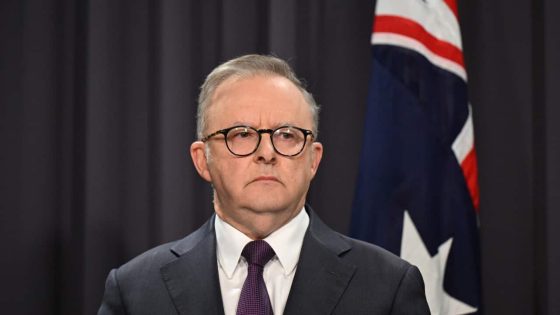Key Points
- Australia has increased its terror threat level.
- Anthony Albanese says more Australians are embracing a more diverse range of extreme ideologies.
- ASIO is concerned about the possibility of small groups or individuals launching attacks with “rudimentary weapons”.
The terror threat level in Australia has been raised to “probable” from “possible”, with eight incidents investigated within Australia since April.
The threat level was downgraded in 2022 but a rise of extremism across the political and ideological spectrum has forced the upgrade, Prime Minister Anthony Albanese said on Monday.
“I want to reassure Australians probable does not mean inevitable and it does not mean it is intelligence about an imminent threat or danger,” Albanese told reporters in Canberra.
“But the advice that we have received is that more Australians are embracing a more diverse range of extreme ideologies and it is our responsibility to be vigilant.”
All eight disruptions investigated in last four months involved males aged 14-21
with authorities noting young Australians are particularly vulnerable.
ASIO concerns about politically motivated violence
ASIO director-general Mike Burgess, speaking at the announcement, said politically motivated violence was now, along with espionage and foreign interference, his agency’s main security concern.
“We are seeing an increase in extremism, more Australians are being radicalised and radicalised more quickly,” he said.
“More Australians are willing to use violence to advance their cause.
“This includes violent protest, riots, and attack on a politician or democratic institutions.”
Burgess said while political differences and debates were an essential part of a healthy democracy: “provocative inflammatory behaviours are being normalised” and “trust in institutions is eroding”.
He said “this trend increased during COVID and gained momentum after the terrorist attacks on Israel and accelerated during Israel’s military response”.
“The dynamics are raising the temperature of security environment.”
War in Gaza not the cause of threat upgrade
Burgess said the decision was not related to the .
“At this stage we do not believe any of the terrorist plots we have investigated in the last year have been inspired by Gaza,” he said.
“Terrorist leaders offshore are not inspiring attacks on shore. This is why we did not raise the threat level in the immediate aftermath of 7 October.”
But he said: “… the conflict has fuelled grievances, promoted protests, exacerbated division, undermined social cohesion and elevated intolerance.”
Threat of attacks
Burgess said he was unable to provide detail on the eight “attacks or disruptions that have either involved alleged terrorism or investigated as potential acts of terrorism” in Australia in the past four months.
However, he said the most likely terrorist act would be the types of attacks that involve an individual or small group “using rudimentary weapons such as knives improvised explosives or a gun”.
“Individuals are moving to violence with little or no warning and little or no planning,” he said.
“Acts of violence can be almost spontaneous and purely reactive.”
Burgess said there had been a “resurgence in the number of minors embracing violent extremism”.
“Extremist ideologies and conspiracies misinformation are flourishing in the online ecosystem and young Australians are particularly vulnerable.”


